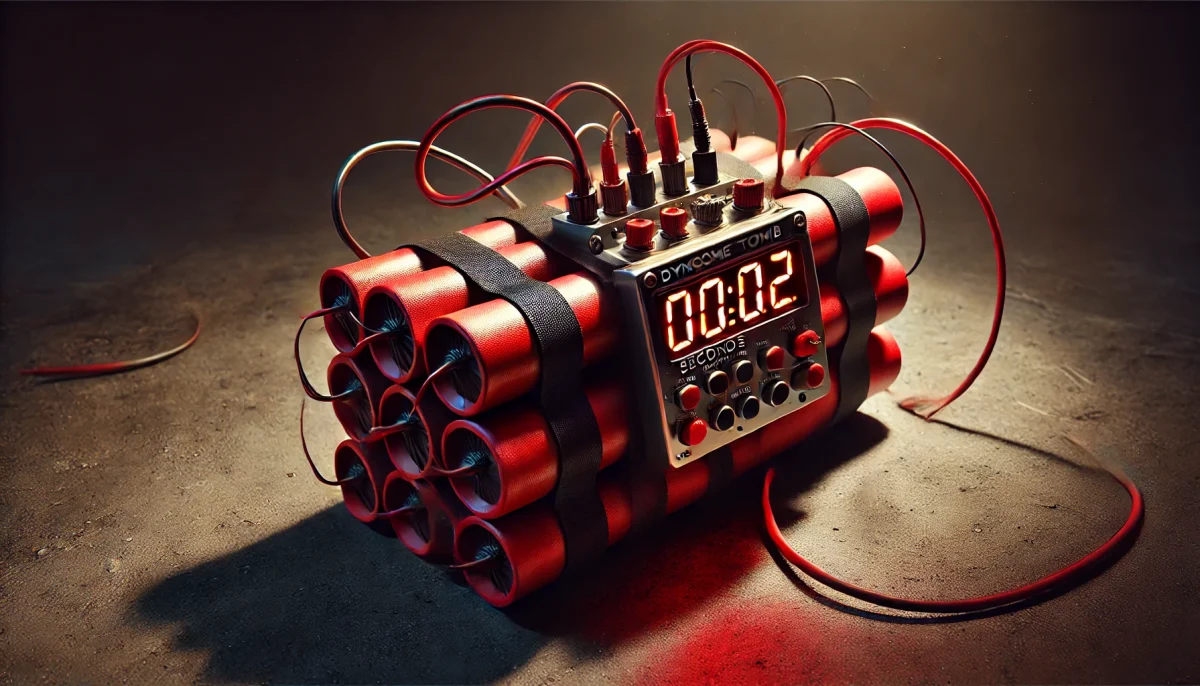The Five Elements of Dramatic Tension
Dramatic tension is the engine that keeps a story engaging, compelling readers to turn the pages in anticipation of what happens next. Whether it’s a mystery that needs solving, a looming threat, or an internal struggle within a character, tension builds intrigue and emotional investment. Without it, even the most well-constructed plots can feel flat.
At its core, dramatic tension arises from conflict, uncertainty, high stakes, time pressure, and the strategic use of information. When these elements work together, they create a gripping narrative that holds readers’ attention. This guide explores the five essential elements of dramatic tension and how writers can use them effectively to craft compelling fiction.
Element 1: Conflict
The Foundation of Dramatic Tension
At the heart of every compelling story lies conflict. It’s the driving force that creates obstacles, challenges characters, and keeps readers engaged. Without conflict, there is no struggle, and without struggle, there is no tension. Conflict provides a reason for the story to unfold, making it one of the most fundamental elements of dramatic tension.
There are several types of conflict that contribute to tension in different ways:
- Internal Conflict (Character vs. Self): This occurs when a character is torn between two desires, beliefs, or emotions. Internal struggles can create psychological tension, adding depth to character arcs. For example, in Hamlet, the protagonist battles with indecision and moral doubt, fueling the tension throughout the play.
- External Conflict (Character vs. Others or Environment): This includes conflicts between characters (rivalries, betrayals, love triangles) or against forces like society, nature, or fate. In The Hunger Games, Katniss must fight against both the oppressive Capitol and the deadly game itself, keeping the stakes high.
- Philosophical Conflict (Character vs. Ideals or Beliefs): Some of the most compelling stories pit characters against deep-seated ideologies. In 1984, Winston Smith’s struggle against the Party’s authoritarian rule creates an ever-present sense of danger and tension.
By layering multiple types of conflict within a story, writers can build richer, more immersive narratives. Conflict should not be easily resolved; the more complex and unresolved it remains, the more tension it generates.
Element 2: Uncertainty
Keep Readers Guessing to Sustain Tension
Uncertainty is a key driver of suspense, keeping readers engaged by making them question what will happen next. When outcomes are predictable, tension dissipates. However, when the future is unclear – when a character’s fate, a mystery’s solution, a destined relationship, or a pivotal decision remains unresolved – tension builds, compelling readers to keep turning pages.
There are several ways to create uncertainty in a narrative:
- Unpredictable Character Choices: When characters behave in ways that defy expectations but remain true to their personalities, tension escalates. For example, in Breaking Bad, Walter White’s increasingly unpredictable decisions create a constant sense of unease, as even allies can’t trust what he’ll do next.
- Foreshadowing and Red Herrings: Foreshadowing plants subtle hints about future events, building anticipation and dread, while red herrings mislead readers into expecting one outcome before delivering another. Mystery and thriller novels frequently employ these techniques to sustain tension until the climax.
- Shifting Power Dynamics: When a character who seems in control suddenly finds themselves vulnerable, or vice versa, tension spikes. In Game of Thrones, power constantly shifts between characters, making it impossible to predict who will triumph.
Uncertainty makes narratives feel alive, ensuring that readers are never entirely comfortable with where the story is heading. By carefully controlling what the audience knows and expects, writers can sustain tension across entire chapters or even an entire novel.
Element 3: Stakes
Why Stakes Matter in Dramatic Tension
The higher the stakes, the greater the tension. Readers become invested when they understand what a character stands to lose or gain, making every decision, obstacle, or confrontation feel meaningful. Stakes provide the emotional weight behind a story’s conflicts, making them more than just plot mechanics.
- Personal Stakes: The most effective stakes are those that feel deeply personal to the protagonist. If the outcome directly affects their identity, relationships, or deepest desires, readers will be more emotionally engaged. In The Great Gatsby, Gatsby’s desperate attempt to win back Daisy isn’t just about rekindling a romance – it’s about proving his entire life’s reinvention was worthwhile.
- Escalation of Stakes: As a story progresses, the stakes should increase. A small problem at the beginning should build into something much more significant by the climax. In The Hunger Games, Katniss starts by simply trying to survive, but as the story unfolds, her actions trigger a full-scale revolution, escalating the stakes from personal survival to societal upheaval.
- Moral and Ethical Dilemmas: Sometimes, the best tension comes not from physical danger but from difficult choices. A character forced to decide between betraying a friend or failing their mission faces intense dramatic tension, as both outcomes have severe consequences.
For stakes to be effective, they must be clear, personal, and continuously rising. The higher the cost of failure, the more tension a story will have. Within reason, of course – there are only so many times that a plucky band of superheroes can be tasked with saving the very fabric of the universe before that trope becomes tiresome. High stakes that remain realistic, or at least within the realm of comprehension for the audience, are most effective.
Element 4: Time Pressure
The Urgency Factor: How Time Limits Intensify Tension
Adding a ticking clock to a story immediately raises tension. When characters have limited time to achieve their goal, every second feels crucial, and the pressure mounts. Time pressure forces decisions to be made quickly, often under imperfect conditions, increasing the likelihood of conflict, mistakes, and suspense.
- Deadlines and Countdowns: The classic “race against time” scenario is a staple of thrillers, heists, and action stories. Whether it’s a bomb about to detonate (Speed), a spaceship losing oxygen (The Martian), or a looming execution (The Green Mile), time constraints push characters to their limits and keep readers on edge.
- Impending Doom or Irreversible Events: Sometimes, the threat isn’t a literal ticking clock but a looming moment of no return. This could be an upcoming battle (The Return of the King), a wedding that must be stopped (Romeo and Juliet), or a prophecy about to be fulfilled (Macbeth). The closer the moment gets, the tighter the tension coils.
- Delays and Setbacks: The best use of time pressure isn’t just the deadline itself, but the obstacles preventing characters from meeting it. A last-minute betrayal, a broken-down car, or an unforeseen revelation at the eleventh hour can elevate suspense even further.
Time pressure amplifies stakes and conflict, making everything feel more urgent and emotionally charged. The shorter the time available, the greater the tension.
Element 5: Audience Knowledge vs. Character Knowledge
Dramatic Irony: When the Audience Knows More (or Less) Than the Characters
One of the most effective ways to create tension is through the manipulation of knowledge – specifically, the difference between what the audience knows and what the characters know. This technique, known as dramatic irony, keeps readers engaged as they anticipate how (or if) a character will discover the truth.
- When the Audience Knows More Than the Character:
This is one of the most common uses of dramatic irony, creating suspense as the audience waits for the inevitable moment of revelation. In Romeo and Juliet, the audience knows Juliet is alive while Romeo believes she is dead, making his tragic decision all the more heartbreaking. Horror films frequently use this technique, as viewers see the danger lurking ever closer, while the characters remain oblivious. - When the Character Knows More Than the Audience:
This technique, often used in mysteries and thrillers, keeps the reader in suspense by withholding key information. A detective who suddenly realizes the killer’s identity but doesn’t reveal it right away creates tension because the audience is desperate to know what they’ve figured out. - Misinformation and Deception:
Sometimes, both the characters and the audience are misled, only discovering the truth later. In Fight Club, the protagonist and audience alike are unaware of the true nature of Tyler Durden until the twist is revealed, dramatically recontextualizing the story.
By controlling what information is revealed and when, writers can keep tension high, ensuring readers remain invested in the unfolding drama.
Bringing Tension to Life in Your Storytelling
Dramatic tension is the fuel that keeps readers engaged, and mastering its key elements – conflict, uncertainty, stakes, time pressure, and audience knowledge – can elevate your storytelling. By layering these elements effectively, you can create a gripping narrative that keeps readers turning pages, eagerly anticipating what happens next.
Whether through unpredictable conflicts, escalating stakes, or the strategic use of dramatic irony, tension is what gives a story its emotional pull. Experiment with these techniques, refine your pacing, and build suspense to craft narratives that captivate and resonate with your audience.



-0 Comment-